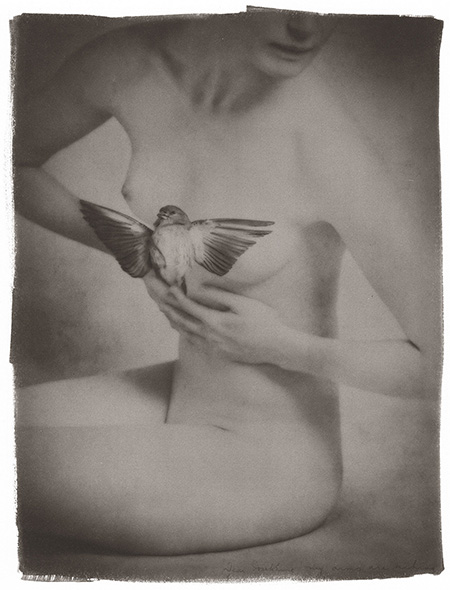
Continuing through February 25, 2017
In New York in 1929 George Daniels, a young bank executive, met Edna MacInnis, a nursing student, beginning a three-year courtship, much of it conducted through daily correspondence. A trove of seventy-three of his letters, written on Bank of Canada stationery from George’s employer, somehow found its way onto eBay, from which it was acquired almost accidentally by photographer Brigitte Carnochan. She realized its value only years later, while cleaning her studio: “In this series I use photos of my imagined Ednas to respond to excerpts from the letters that I believe she might have singled out … What would the writer of the letter[s] think, could he see ‘them’ on display in such a way? … I hope he would be pleased to see his narratives of daily life, his dreams and aspirations, his occasional lapses into uncertainty and frustrations, given a new life in art.”
The show, titled "Love & Kisses, George," comprises twenty platinum palladium photographs combining nude female figures in solitary reveries with veils of fabric, flower blossoms, foliage, birds, and enlarged passages of handwriting, which lend them their titles—e.g., “Alone with my Thoughts,” “Beginning to Find a Way,” “Tell me I’m forgiven,” “Melting Icicles.” The images are composited digitally, then made into a negative, which is printed as a platinum print, or platinotype. Platinum prints have a more expanded middle range of tones than silver-gelatin prints, without its pure lights and darks; a palette of warm reddish and brownish grays; a completely matte surface. When printed on 100% rag papers they aquire a staggering degree of permanence — literally thousands of years. The medium’s inherent qualities perfectly enhance the elegiac, romantic sensibility of these works, which resemble Man Ray’s roughly contemporaneous Surrealist nude photos (though more veiled) as well as the Symbolist/Pictorialist photos of Julia Margaret Cameron (though more revealing). Included also are twelve collages on panel, incorporating the actual letters into Yeats’ “artifice of eternity” world of art … what is past, or passing, or yet to come.”
